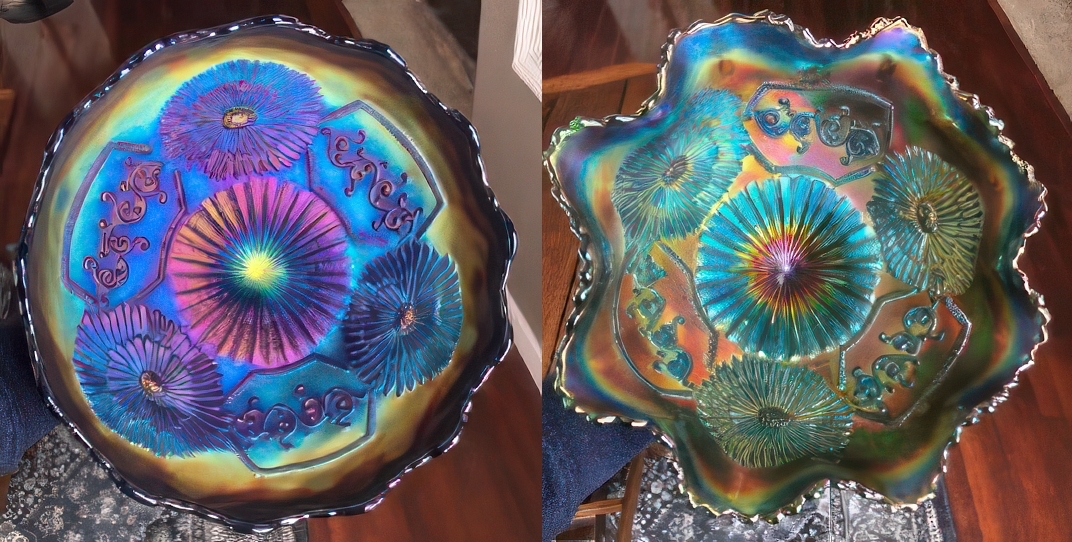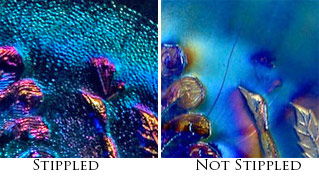Mikado
By Bob Patterson
Mikado is kind of a mysterious pattern and is only found in the large compote shape. The back pattern is Fenton’s Cherry pattern that extends down to the base. Mikado was produced by Fenton from around 1920 to 1922. Part of the mystery of this pattern is why it was named Mikado in the first place. I did a little research on the meaning of the word “Mikado”. I found a Mikado pheasant that is found in the grassy terrain of central and southern Taiwan. They don’t appear to have iridescent plumage, so I think this was not what Marion Hartung was referring to. Mikado also is the name of a glacier in Antarctica, a type of steam Locomotive, a genus of beetles, and a type of earwig. The Mikado was also a comic opera by Gilbert and Sullivan in 1885. Mikado also means Emperor of Japan and that, to me, makes the most sense.
This very attractive interior pattern is composed of what look like chrysanthemums, scrolls and stippled rays. Another mystery to me is why it was only produced in the compote shape. I would love to have a bowl or a plate or perhaps a water set in this pattern. Perhaps sales were slow as demand for a large compote lagged at that time and the pattern was blamed. Perhaps because Mikado is the only large size compote with an interior pattern that I can think of. It may have been looked at as too good for use and hard to clean after use with the detailed interior pattern. Glass colors are limited in this pattern, as one would expect to see a celeste or Ice green example to show up with production being in the early 20’s. Marigold is the most found color with extremely rare red and white examples are also known.
One of the more interesting things in the hobby of collecting carnival glass is that you never know what is going to show up next. One can only dream of finding a Vaseline chop plate in this pattern in some dusty antique mall. I would settle for a celeste blue compote in this mysterious pattern.

Pictured on the left is our electric blue example with a round top. On the right is our emerald, green Mikado compote featuring a ruffled top.
This article first appeared in the ICGA Pump in the March 2023 issue and is reprinted with permission.

